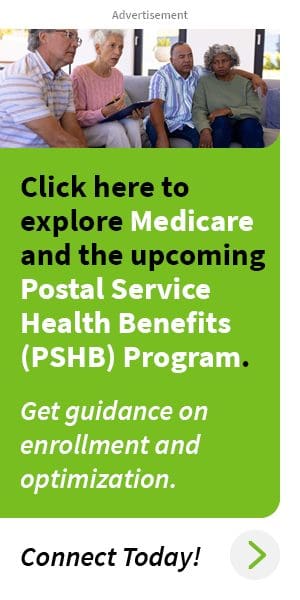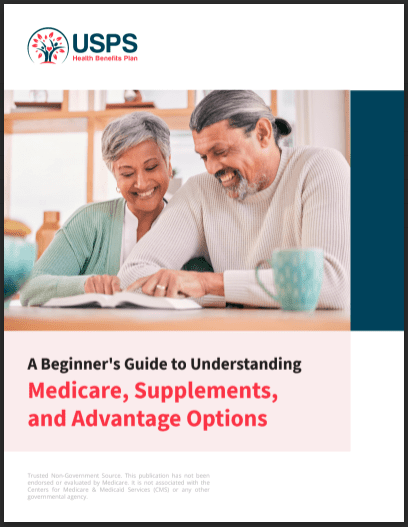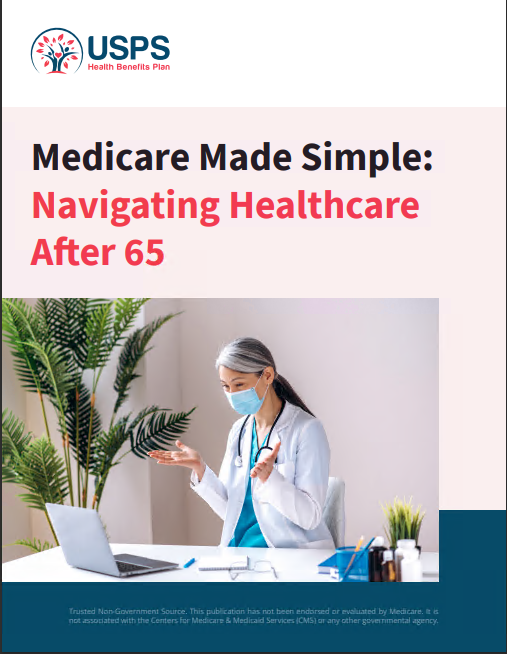Key Takeaways:
- USPS retirees must enroll in Medicare Part B to maintain PSHB coverage starting in 2025.
- A special enrollment period for Medicare Part B runs from April to September 2024 for eligible USPS annuitants.
Confused About the Requirement to Enroll in Medicare Part B and PSHB? Here’s a Simple Guide for USPS Retirees
Navigating the intricacies of health benefits can be challenging, especially for retirees. For USPS retirees, understanding Medicare Part B is crucial due to recent legislative changes. Medicare Part B covers essential medical services like doctor visits, outpatient care, and preventive services. Enrollment in Medicare Part B is now a requirement for retirees who wish to continue their health coverage under the new Postal Service Health Benefits (PSHB) Program, effective January 1, 2025.
Why Understanding Medicare Part B Matters for USPS Retirees
Medicare Part B plays a vital role in ensuring that retirees receive comprehensive medical coverage. It helps cover costs associated with outpatient services, which can include doctor’s visits, diagnostic tests, and various preventive services. For USPS retirees, the importance of Medicare Part B has increased significantly due to its integration with the new PSHB program. This integration means that without enrolling in Medicare Part B, retirees could face gaps in their healthcare coverage and increased out-of-pocket costs.
PSHB: What It Means and Why You Should Care
The Postal Service Health Benefits (PSHB) Program is a new initiative established by the Postal Service Reform Act of 2022. It will replace the existing Federal Employees Health Benefits (FEHB) Program for USPS employees, retirees, and their families. The PSHB program, administered by the U.S. Office of Personnel Management (OPM), aims to streamline and improve health benefits for postal service workers and retirees. One key component of this program is the mandatory enrollment in Medicare Part B for Medicare-eligible retirees to maintain their PSHB coverage.
The PSHB program is designed to provide more tailored health benefits to USPS employees and retirees. By requiring Medicare Part B enrollment, the program ensures that retirees have a consistent and reliable source of healthcare coverage. This integration is expected to provide better financial protection against medical expenses and enhance the overall quality of healthcare services available to USPS retirees.
When Should You Enroll in Medicare Part B?
Enrollment timing is critical to avoid penalties and ensure continuous coverage. USPS retirees eligible for Medicare Part A but not yet enrolled in Part B will have a special enrollment period (SEP) from April 1, 2024, to September 30, 2024. This SEP allows eligible retirees and their covered family members to enroll in Medicare Part B without incurring late enrollment penalties. It is essential to take advantage of this period to avoid any gaps in coverage or additional costs.
During this special enrollment period, retirees should carefully review their current health coverage and how it will change once they enroll in Medicare Part B. By enrolling during the SEP, retirees can ensure that their transition to the new PSHB program is smooth and without any interruption in their healthcare services. This proactive approach can save retirees from potential financial burdens and ensure that they continue to receive the care they need.
Navigating the Transition: USPS Retiree Health Benefits and Medicare
Transitioning to the PSHB program requires careful planning and understanding of how Medicare interacts with your current benefits. Once enrolled in Medicare Part B, your PSHB plan will work in tandem with Medicare to provide comprehensive coverage. Medicare will be the primary payer for your medical services, while your PSHB plan will cover additional costs not paid by Medicare, such as deductibles, coinsurance, and certain services.
Understanding the coordination of benefits between Medicare and the PSHB program is essential for managing your healthcare effectively. Retirees should familiarize themselves with how claims will be processed and what portions of their medical expenses will be covered by each program. This knowledge will help retirees make informed decisions about their healthcare and avoid unexpected expenses.
The Connection Between Medicare Part B and Your USPS Benefits
Understanding how Medicare Part B integrates with your PSHB benefits is crucial for managing your healthcare effectively. Upon enrolling in Medicare Part B, you will notice changes in how claims are processed and paid. Medicare Part B will cover a significant portion of your medical expenses, reducing the out-of-pocket costs you would otherwise incur under your PSHB plan alone. This integration ensures you receive comprehensive care without duplicating coverage or payments.
Retirees should also be aware of the potential financial implications of not enrolling in Medicare Part B. Failure to enroll during the SEP can result in late enrollment penalties and higher out-of-pocket costs. Additionally, without Medicare Part B, retirees may lose access to certain benefits under the PSHB program, further increasing their healthcare expenses.
Common Questions About Medicare Part B Enrollment
Do I have to enroll in Medicare Part B? Yes, starting January 1, 2025, Medicare-eligible USPS retirees must enroll in Medicare Part B to maintain their PSHB coverage. This requirement ensures that retirees have access to comprehensive healthcare coverage and helps manage the overall cost of medical services.
What happens if I don’t enroll in Medicare Part B during the SEP? Failing to enroll in Medicare Part B during the SEP may result in losing your PSHB coverage and incurring late enrollment penalties. These penalties can significantly increase your monthly premiums for Medicare Part B and result in higher overall healthcare costs.
How does the SEP work? The special enrollment period runs from April 1, 2024, to September 30, 2024, allowing eligible USPS retirees and their family members to enroll in Medicare Part B without late penalties. During this period, retirees should submit their enrollment applications and ensure that all necessary documentation is provided to avoid any delays or issues with their coverage.
Tips for Managing Medicare and PSHB Together
- Enroll Early: Make sure to enroll in Medicare Part B as soon as you become eligible to avoid penalties and ensure seamless coverage. Early enrollment can help you avoid any gaps in your healthcare coverage and reduce your out-of-pocket expenses.
- Understand Your Benefits: Familiarize yourself with how Medicare Part B and your PSHB plan work together to cover your healthcare needs. Understanding the coordination of benefits will help you make informed decisions about your healthcare and avoid unexpected costs.
- Stay Informed: Keep up to date with any changes or updates to the PSHB program and Medicare to make informed decisions about your health coverage. Staying informed will ensure that you are aware of any new benefits or requirements that may affect your coverage.
- Utilize Resources: Take advantage of the educational seminars and resources provided by USPS and OPM to better understand your benefits and enrollment options. These resources can provide valuable information and guidance to help you navigate the enrollment process and manage your healthcare coverage effectively.
Where to Get Help: Resources for USPS Retirees
For additional assistance and detailed information, USPS retirees can refer to several resources:
- USPS Benefits and Wellness Team: Attend the lunch and learn seminars held every other Thursday through early December. These seminars provide in-depth information on the PSHB program and how it integrates with Medicare.
- Consumers’ Checkbook Seminars: Monthly seminars provide in-depth information on Medicare Parts A, B, C, and D. These seminars can help retirees understand their Medicare benefits and how to compare different plans.
- PSHB Watch Parties: Monthly watch parties starting in April 2024 offer a comprehensive overview of the new PSHB program. These watch parties provide a convenient way for retirees to learn about the new program and ask questions about their coverage.
Navigating Your Health Benefits Transition
Transitioning to the PSHB program and enrolling in Medicare Part B may seem daunting, but with the right resources and timely action, USPS retirees can ensure they maintain comprehensive health coverage. By understanding the requirements, taking advantage of special enrollment periods, and utilizing available resources, retirees can navigate this transition smoothly and effectively.
Ensuring Comprehensive Coverage
Ensuring that you have comprehensive coverage requires understanding how your benefits work together. By enrolling in Medicare Part B and taking full advantage of the PSHB program, you can secure your healthcare needs for the future. It’s important to stay proactive, informed, and engaged with the available resources to make the best decisions for your health.
Contact Information:
Email: [email protected]
Phone: 6145554567










